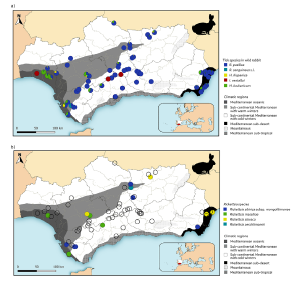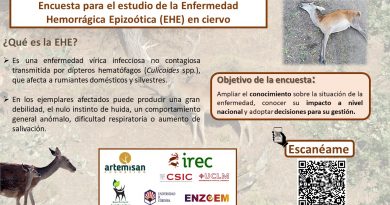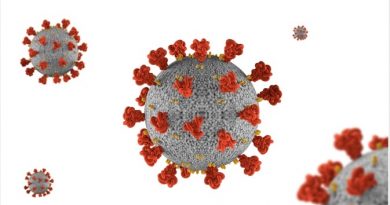Molecular identification of zoonotic Rickettsia species in Ixodidae parasitizing wild lagomorphs from Mediterranean ecosystems
Transboundary and Emerging Diseases
Abstract
A survey study was carried out to identify tick species parasitizing wild lagomorphs in Mediterranean ecosystems in southern Spain and to determine the occurrence of Rickettsia species present in these ticks in this region. A total of 1,304 European wild rabbits (Oryctolagus cuniculus) and 58 Iberian hares (Lepus granatensis) were individually examined for the presence of ticks. Ticks were found in 42.9% and 50% of the wild rabbits and hares sampled, respectively. A total of 1,122 ticks were collected and five species, including Rhipicephalus pusillus, Hyalomma lusitanicum, Haemaphysalis hispanica, Ixodes ventalloi and Rhipicephalus sanguineus sensu lato (s.l.), were microscopically and molecularly identified at the 16S rRNA gene. This is the first study on Ixodidae parasitizing Iberian hares. Presence of Rickettsia DNA was assessed in 254 tick pools (according to hunting states, lagomorph species, tick species and tick development stage) using PCR assays targeting the rOmpA, rOmpB and gltA. Twenty-seven pools (10.6%) were positive to Rickettsia DNA. Five zoonotic Rickettsia species were identified, being Rickettsia massiliae the most frequent (4.7%), followed by R. sibirica subsp. mongolitimonae (2.8%), R. slovaca (2.0%), R. aeschlimannii (0.8%) and R. africae (0.4%). The results suggest that wild rabbits and Iberian hares are parasitized by a wide range of tick species and that these lagomorphs may play an important role in the sylvatic cycle of some zoonotic Rickettsia species in Mediterranean ecosystems. Our data represent the first report of R. massiliae, R. aeschlimannii, R. slovaca and R. africae in ticks collected in wild lagomorphs in Europe, and the first report of not imported R. africae in this continent. Since R. slovaca and R. africae DNA was detected in tick species different to their main vectors, further studies are warranted to unravel the role of wild lagomorphs in the epidemiology of these vector-borne pathogens. This article is protected by copyright. All rights reserved.




